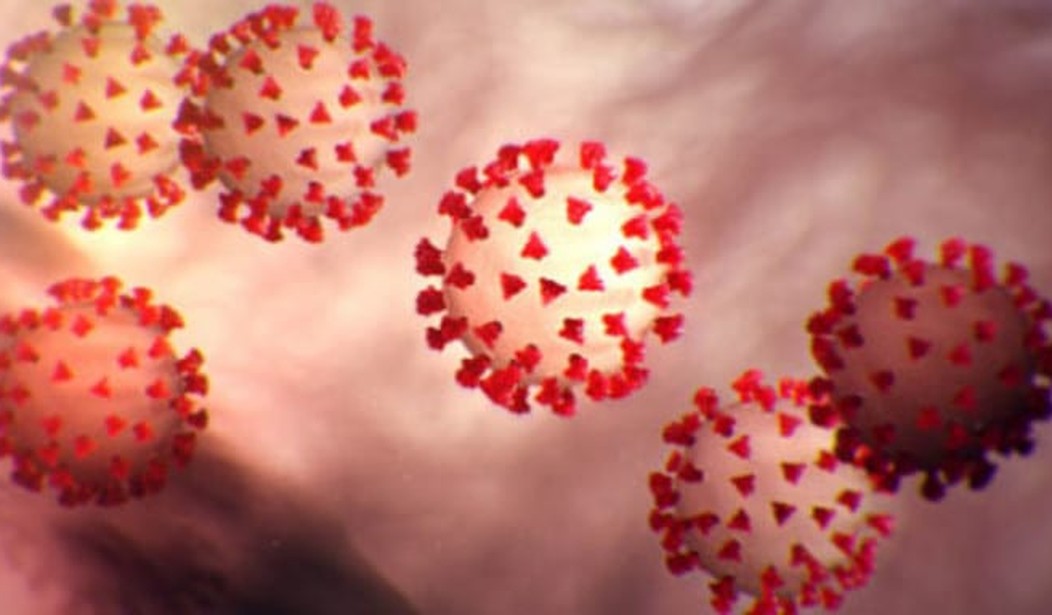The CDC is America’s lead agency for expertise and guidance on the Wuhan virus, so the CDC web site is where you’d look for up-to-the-minute data on this outbreak, right? Umm, nope, don’t even think about it. As confirmed case numbers nation-wide soared over the weekend, the numbers posted Friday on the CDC web site didn’t budge: 164 total cases, 11 deaths. No change. In CDC-world, the virus took a break over the weekend. Meantime, in the real world, the far more timely and accurate online dashboard provided by Johns Hopkins was reporting on the soaring case numbers for this virus, which by Sunday afternoon had topped 500 (more than triple the CDC’s number) and 21 deaths (almost double the CDC figure).
In normal times, the CDC’s lowball, lagging numbers might qualify merely as a great example of the usual sludge of federal bureaucracies — as in “We’re from the Centers for Disease Control and Prevention, and we’re here to help you.” But this is not a normal moment. This winter, China — by initially suppressing its own doctors’ warnings about the potentially deadly nature of this virus — unleashed an epidemic that in less than three months has spread from the Chinese city of Wuhan to infect people in at least 100 other countries around the globe, with thousands beyond China already stricken, hundreds dead, and numbers rising fast. America — fortunately — does not have at its fingertips China’s vast repressive apparatus of brute force coated with propaganda, which is how Beijing styles its approach to disease control. America’s strong suit is that we are a capitalist, free society, steeped in free speech, free enterprise and the ways of individual responsibility, capable of mustering enormous resources and ingenuity to cope with this threat.
But what Americans need above all right now, to leverage these strengths, is accurate information. This is vital to making a zillion decisions, big and small, about whether to show up at the workplace, go ahead with a business meeting, get on a plane, meet friends for dinner, wash your hands (yet again) or visit elderly or immuno-compromised friends and relatives, at risk of unknowingly passing along a disease that could kill them.
On a Sunday evening, for instance, it might well make an important difference to a great many private calculations, to know that the case numbers, while apparently frozen in amber on the web site of the CDC, have in reality soared, tripling since just before the start of the weekend, while the death count from this virus has almost doubled. The absolute numbers are still relatively low, but the trajectory, and the cases turning up now salted around the country, suggest chains of transmission that the CDC has simply failed to keep up with. President Trump’s restrictions imposed in January on China travel (much criticized in the media at the time) helped buy time to get ahead of this epidemic. The CDC has since been squandering that lead. The CDC botched the production of tests for this virus, made far too few, which turned out to work badly, imposed highly restrictive guidelines on who qualified to be tested, and overall wasted weeks of precious time, as the virus itself escaped the CDC’s snail-mail surveillance and testing methods, and began hop-scotching around the country.
At the end of February, Vice President Pence took charge of a task force to coordinate a better response to the Wuhan virus. One of the first things they did — hallelujah — was scrap the CDC monopoly on testing, allowing state and local labs to run their own tests, and enlisting private companies to start producing (functional) tests in the huge quantities needed for a country of 330 million (as of March 5, the CDC, according to its own web site, had tested a grand total of 1,583 patients).
The more the private sector can be brought into this effort, the better. America has resources in staggering abundance for fighting this virus, including brilliant and creative people, if federal bureaucracies do not muscle them aside or sideline them while wallowing in regulations and filling out paperwork. Surely, if the feds are having trouble fully tracking and mapping the spread of this disease, Amazon, Google, and Facebook — already versed in our individual preferences for everything from aspirin to cough medicine — could in a trice home in on signs, or proxy signs, and likely vectors of this virus, or collate information on where, precisely, and when, American doctors have seen patients with symptoms that left them begging for tests. I mention those particular corporate giants only because they are so well known. But for weeks now I’ve been wondering if half a dozen 24-year-old tech geeks working with a Merck manual in a garage could have done a better job of tracking this virus than the CDC.









Join the conversation as a VIP Member